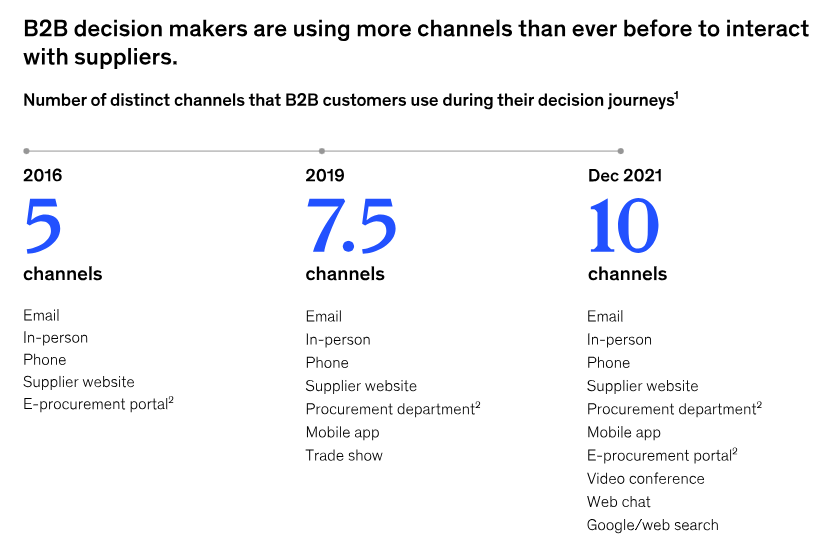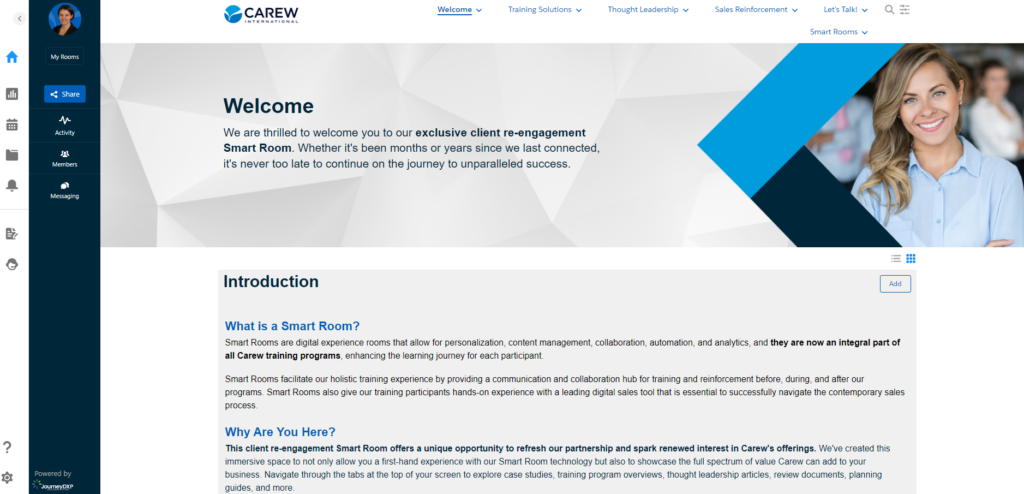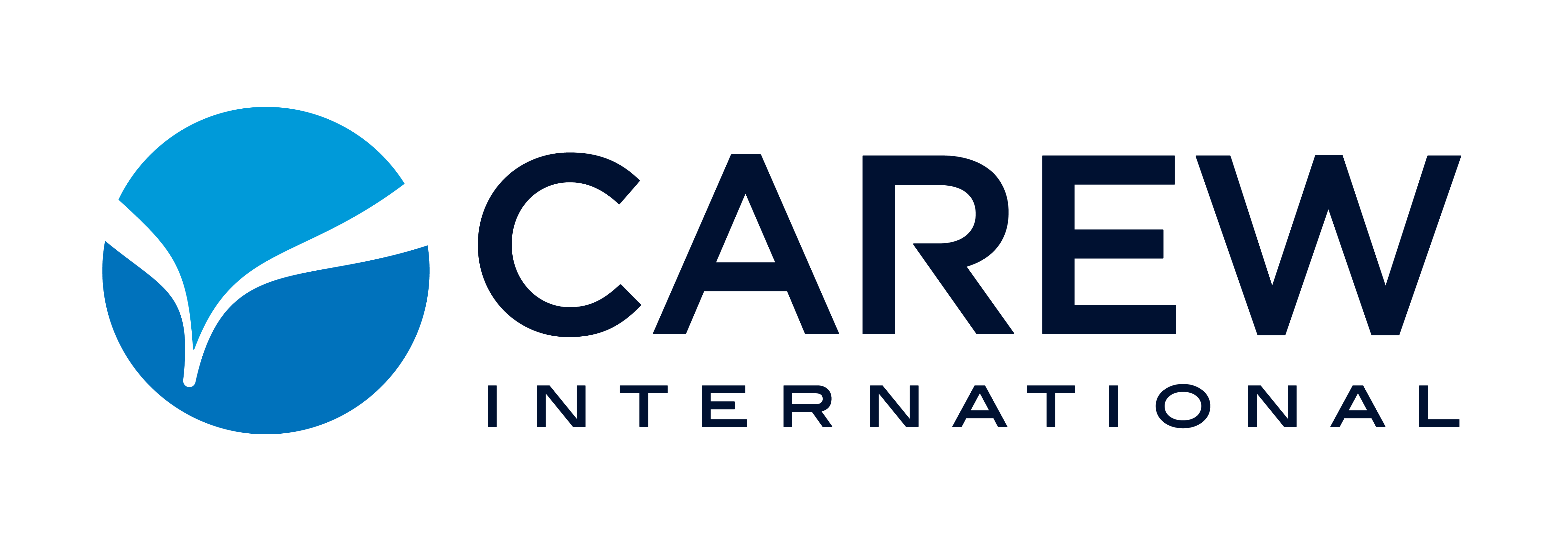B2B buyers are using more channels, so B2B sellers must, too.
Buyers are increasingly utilizing multiple channels throughout their purchasing journey. This shift demands that B2B sellers adapt by embracing hybrid sales models, which seamlessly blend digital and in-person interactions.

According to a recent McKinsey & Company article, top-performing B2B sellers have witnessed up to 20% revenue gains by redefining their go-to-market strategies through inside and hybrid sales.
Inside Sales: A Closer Look Inside sales involve selling products or services remotely, using digital channels such as phone, email, or video conferencing.
This approach allows sales reps to cover a broader range of prospects at a fraction of the cost compared to traditional field reps. In fact, inside sales teams can typically manage 80% of a company’s accounts, often focusing on smaller and medium-sized customers.
Hybrid Sales: The Best of Both Worlds Hybrid sales models combine the efficiency of inside sales with the personal touch of traditional in-person interactions. This innovative approach is:
- Optimal for managing larger accounts.
- Flexible, utilizing a combination of channels to meet customer preferences.
- Scalable, thanks to the integration of remote and online sales.
- Effective in enabling broader and deeper customer engagement.
- Cost-effective as inside sales components can reduce expenses related to travel and in-person meetings.
- Attractive to a diverse talent pool by offering flexible, modern sales roles that align with evolving work preferences.
With 85% of companies expecting hybrid sales to become the most common job role within three years and 57% of companies that grew more than 10% in 2022 having adopted this model, it’s clear that hybrid sales are the way forward.
Supercharging Hybrid Sales: Four Key Strategies
According to McKinsey & Company, there are 4 Ways to Supercharge Hybrid Sales:
- Agility: Embrace remote interactions where possible and preferred by customers while maintaining the option for in-person sales.
- Insights: Utilize end-to-end customer and seller insights to inform strategies and decisions.
- Technology: Optimize technology for a remote-first environment, focusing on solutions that address core sales process pain points and enhance remote customer interactions.
- Talent: Develop next-gen sales capabilities and attract diverse talent by fostering a learning-oriented culture.
Evolving Your Sales Model To adapt to this changing landscape, encourage your team to be more active on social media channels like LinkedIn and engage in industry groups to support your customers. Focus on building long-term customer relationships beyond the initial sale, with regular outreach to keep customers engaged.
Digital selling solutions like Smart Rooms by our partner Journey DXP can help your sales team provide customers and prospects with customized digital experience platforms. For example, these digital sales rooms mean your sales team can move away from traditional email as their primary mode of communication and into a full-scale collaboration with several contacts within a client organization simultaneously. All while giving your sales professionals insight into their customer’s online buying signals.

All of Carew’s training programs include access to a personalized digital smart room (like the one shown here).
Smart Rooms facilitate our holistic training experience by providing a communication and collaboration hub for training and reinforcement before, during, and after workshops. Plus, our Smart Rooms give participants hands-on experience with a digital sales tool that is essential to successfully navigate the contemporary sales process.
The Future of B2B Sales The shift towards hybrid selling, initially an adaptation to the pandemic, is expected to be the most dominant sales strategy this year. This approach can drive up to 50% more revenue by enabling broader, deeper customer engagement and unlocking a more diverse talent pool. Organizations must transition from separate inside and outside sales teams to a cohesive hybrid strategy to meet the evolving needs of buyers and decision-makers.
Hiring, Training, and Development McKinsey’s global B2B Pulse found that nearly 40 percent of organizations added hybrid sellers to their ranks over the past two years. This role is set to become the second most prominent B2B sales role over the next three years.
In addition to bringing in new hybrid sellers, leaders need to ramp up training and skill building to ensure existing field and inside sales representatives are comfortable with omnichannel responsibilities. Sales training is an essential strategy so all sales professionals are prepared to solve problems, identify sales opportunities, and then seize those opportunities with every customer or prospect contact.
A core sales methodology like Dimensions of Professional Selling® can make training these new sales roles much easier. While modes of communication may change, the core fundamentals of how sales professionals and managers need to interact with customers won’t.
Embracing hybrid sales means establishing the right processes, tools, training, and technology to close more deals while adapting to prospects’ and customers’ preferences.
Sales leaders who recognize the importance of a hybrid sales process set their organizations up for increased revenue, satisfied customers, and overall success.





